Discover the Persian Gulf
The journey ”Discovering the Persian Gulf” which aims to combine two objectives in the same journey. With the Calm and Culture cycle we thought we could satisfy the different timing needs together with cultural interests. In fact, each itinerary will be able to take you to try a unique experience, making you experience the local culture with a particular strategy, created for lovers of the typical landscapes and wonderful islands of Iran. This itinerary allows us to learn about the history of the Hormuz Strait, the Salt Cave, which with its 6 kilometers in length holds the record for the largest salt cave in the world, the Bloody and Turtle Beach, the Rainbow Mountains, the magnificent Waves with colorful shades of red, orange, yellow and purple on the rocks and mountains are truly a psychedelic experience. The characteristics and attractions of the Valley of the Stars have led to the registration of the island of Qeshm among the UNESCO geospatial natural phenomena. Qeshm Geo Park is the only one in the Middle East with natural and historical beauty. We then enter the mangrove forest of Hara, and on board a boat we travel along numerous waterways to admire various species of birds such as egrets, gray herons and cormorants in their natural habitat. Located in the north center of Qeshm, the forest is a Biosphere Reserve of 8,000 hectares of mangroves, roots and mud that emerge at low tide and disappear at high tide, leaving only the green foliage visible. The mangroves have their roots in the salt water, but the bark’s filtration system blocks the salt, allowing only fresh water to reach the leaves.
Qeshm, shaped like a dolphin, is the largest island in the Persian Gulf, located on the Strait of Hormuz, just 60 kilometers from the coast of Oman. With an area of 1335 km2, a length of 115 km and a width between 10 and 35 km, its size is double that of Bahrain, but it has less than 15% of its population. It is a mountainous island, with a largely rocky coast dotted with villages and towns, while in the interior there are few settlements. Thanks to its position, Qeshm was of great strategic importance for trade for many centuries: its position in the gulf made it a perfect base and a stopping point for trade from the East to Europe. For this reason it was conquered and governed for about 200 years by the Portuguese, whose passage is evidenced in the ruins of the ancient fortresses and in the streets with Portuguese names, both here and on the nearby island of Hormuz. Culture and traditions of the Gulf are still preserved here, which have practically disappeared with the sole exception of some villages in Oman.
Hormuz, the small island, only 8 km long, was famous in the past for its exports of red ocher. After the conquest at the hands of the Arabs, with its many palm groves, grains and spices, the island became the reference market for the city of Kerman until it monopolized the markets of India and China around 1,200. In the 1300s, the Arab ruler of Hormuz, today’s Minab, and its inhabitants left the mainland behind, due to continuous robberies and looting, and founded New Hormuz on the island as an important commercial hub of the Persian Gulf, becoming point of reference for India, Oman and the other islands of the Gulf. Marco Polo went here during his numerous travels. The Portuguese navigator Alfonso de Albuquerque, appointed Viceroy of the Indies, arrived there in 1507 and the Portuguese took it over and made it an important and prosperous trade center, becoming the main power in the waters of the Persian Gulf. After a failed attempt by the Ottoman troops in 1550, Shah Abbas I, with the help of the English who he cunningly involved in the silk trade, drove out the Portuguese in 1622. But, with the growing importance of the port of Bandar Abbas, Hormuz it became depopulated and went into decline. Today Hormuz has only 3,000 inhabitants, dedicated to fishing and the exploitation of salt and iron oxides. Drinking water arrives from the continent through an aqueduct, as the island has no native vegetation.
The best time to visit
It is best to travel there in autumn or winter, when the weather is mild and you have all the comfortable conditions to enjoy your trip. In particular, opt for the period between November and April. Also, keep in mind.
| DEPARTURE/RETURN LOCATION | IKA International Airport | ||||
| DEPARTURE TIME | Please arrive at least 3 hours before the flight. | ||||
| INCLUDED |
| ||||
| NOT INCLUDED |
|
1° Day; Country of origin - Tehran
Depart from your country and arrive in Tehran by airline Turkish flight, meet with guide and transfer to hotel.
2° Day; Tehran - Bandar Abbas - Hormuz
Very early breakfast and transfer to domestic airport to take domestic flight to Bandar Abas, from where we take ferry to Hormuz Island, after settling in hotel we start to discover Rainbow Island, the land of a thousand colors. Visit to Nadalian Museum one of the most active environmental artists. We continue with valley walks on Rainbow Mountains,the magnificent waves with colorful shades of red, orange, yellow and purple on the rocks and mountains are truly a psychedelic experience. We visit Bazarcheh, a local market and at sunset visit the Portuguese Castle which the Portuguese built in the 16th century to maintain control over the Hormoz Strait which is the only sea passage between the Persian Gulf and the open ocean.
Overnight stay on the island in the best available accommodation, the traditional seaside hotel.
3° Day; Hormuz
We continue our visits with Canyon of the Turtle beach and the red or bleeding beach, at the presence of a very high concentration of iron oxides, the sand leads the waves of the sea to be tinged with a more intense reddish color. The bright crimson red path leading to the beach is an incredible color. Be careful because the sand can stain your feet red for a few days, and bathing in these waters involves being left with colored skin. and then Statute Valley in the western part of the island, not far from the Rainbow Mountains, there is then a spectacular mountain of pure salt, called the Salt Goddess. Within it run sharp caves with unexpectedly bright reflections. It is believed to possess the healing power to absorb and release any negative energy. Walking inside barefoot is a purification ritual. The beauty of the place is unique and moving. Overnight stay.
4° Day; Hormuz-Qeshm
After breakfast we head to the pier to catch the boat around 08:00 heading for Qeshm Island, made unique by its great abundance of wild animal life and distinctive geological formations, some of which are on the UNESCO World Heritage list. Qeshm, shaped like a dolphin, is the largest island in the Persian Gulf, whose visits we begin with Chakooh Canyon. Chahkooh is the result of rainwater erosion on sedimentary rock. Afterwards we go to explore the Hara Forest in the small village of Tabl. It is a biosphere reserve of 8,000 hectares of mangroves, Laft town with its famous wind torries and old traditional fishing village is perhaps the place that has most preserved the traditional culture of the Persian Gulf. visit to the local barge yard, Lenj, today they are mainly used for fishing. At the end of the day we travel to a nice and cozy private lodge on the coast for dinner and overnight stay.
5° Day; Qeshm
We continue our exploration of the island. Early in the morning we set off for Hengam Island where boats stop to see schools of dolphins swimming alongside our boat.Along the way if the tide and weather permit, we take a walk to Naz Island, reachable on foot at low tide, with its spectacular coral reefs and the sensational Shib Deraz beach, made unique by its pebbles, where turtles lay their eggs, and where residents take turns protecting the eggs from predators. which dates back about 2 million years, the result of millennia of soil erosion caused by heavy rainfall. Its name comes from the popular belief that a large star fell in this area, thus creating the rocky shapes that make it a place more like another planet than Earth. The features and attractions of the Valley of Stars led to the registration of Qeshm Island among UNESCO’s geospatial natural phenomena. Qeshm Geo Park is the only one in the Middle East with natural and historical beauty. We will visit the Khorbas Cave, it belongs to the Medi era 200 BC. , They are considered ancient geological phenomena and the caves are connected from the inside by a series of tunnels that have been dug, Various uses have changed the appearance of these caves and their walls and made them suitable for their needs with a hall in which a special religious ceremony was held in honor of the dead, and it is very likely that it was the center of the cult of “Izadmehr” or “Mithras.”
One possibility is a beautiful cave, Namakdan Salt Cave, which at 6 kilometers in length holds the record for the largest salt cave in the world. The interior is spectacular, with rippling colors along the walls and bright white salt crystals hanging from the ceiling. It is an incredible sight to behold, but not easy to access and only assessable on site.
6° Day; Qeshm - Tehran - Destination country
Mid-day, we devote time to beaches and relaxation, around mid-day we head to Qeshm airport to board domestic flight to Tehran (takeoff time to be confirmed 4 p.m.). Upon arrival at 6 p.m. transfer to the international airport for the flight back to destination country during the night.


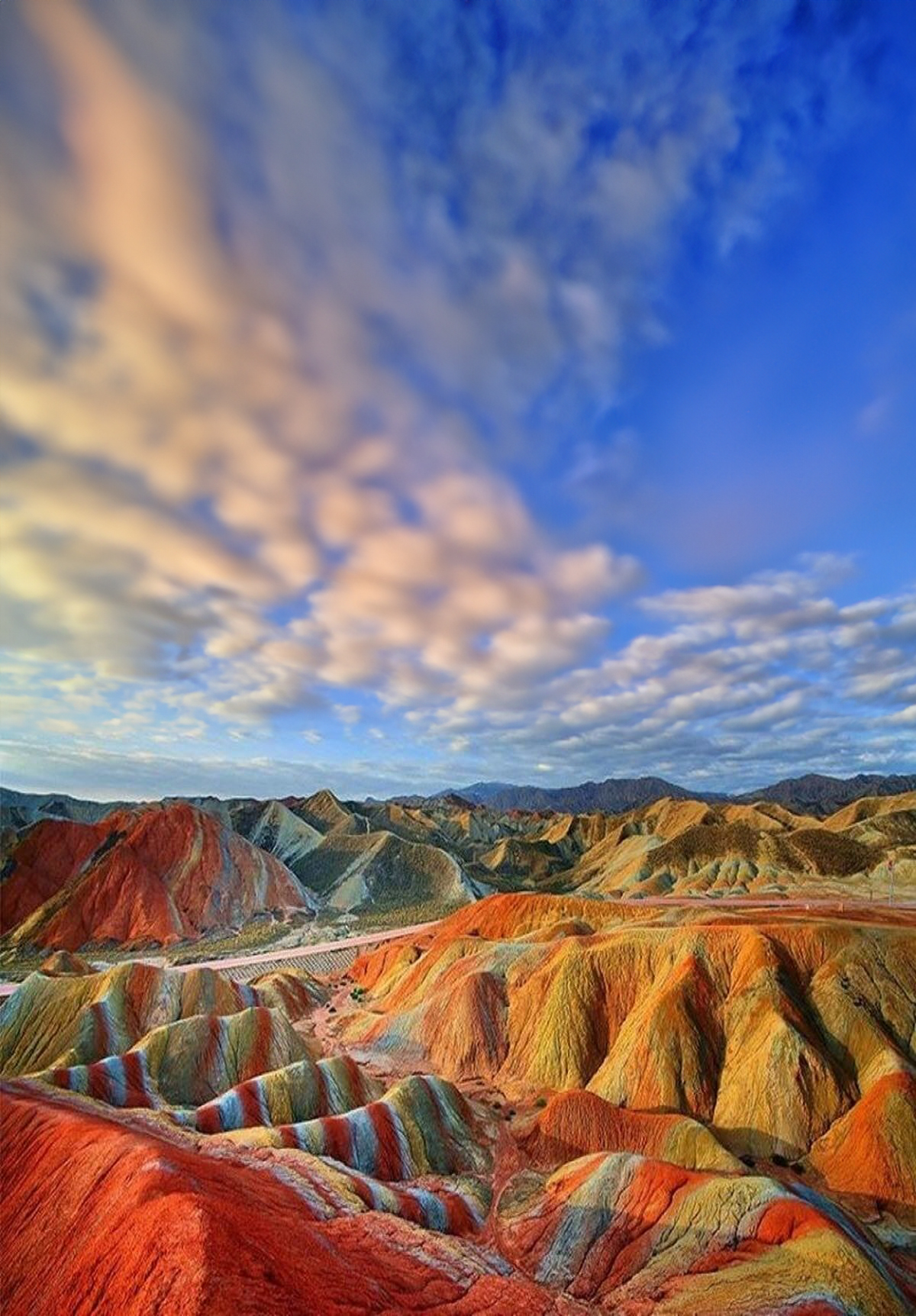
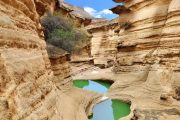
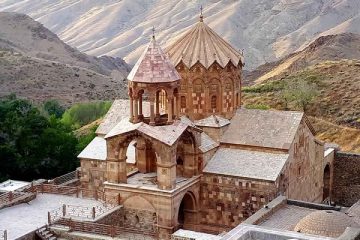
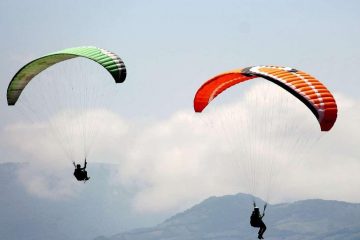
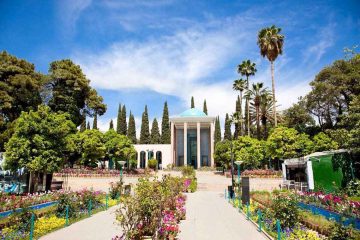
Tour Reviews
There are no reviews yet.
Leave a Review